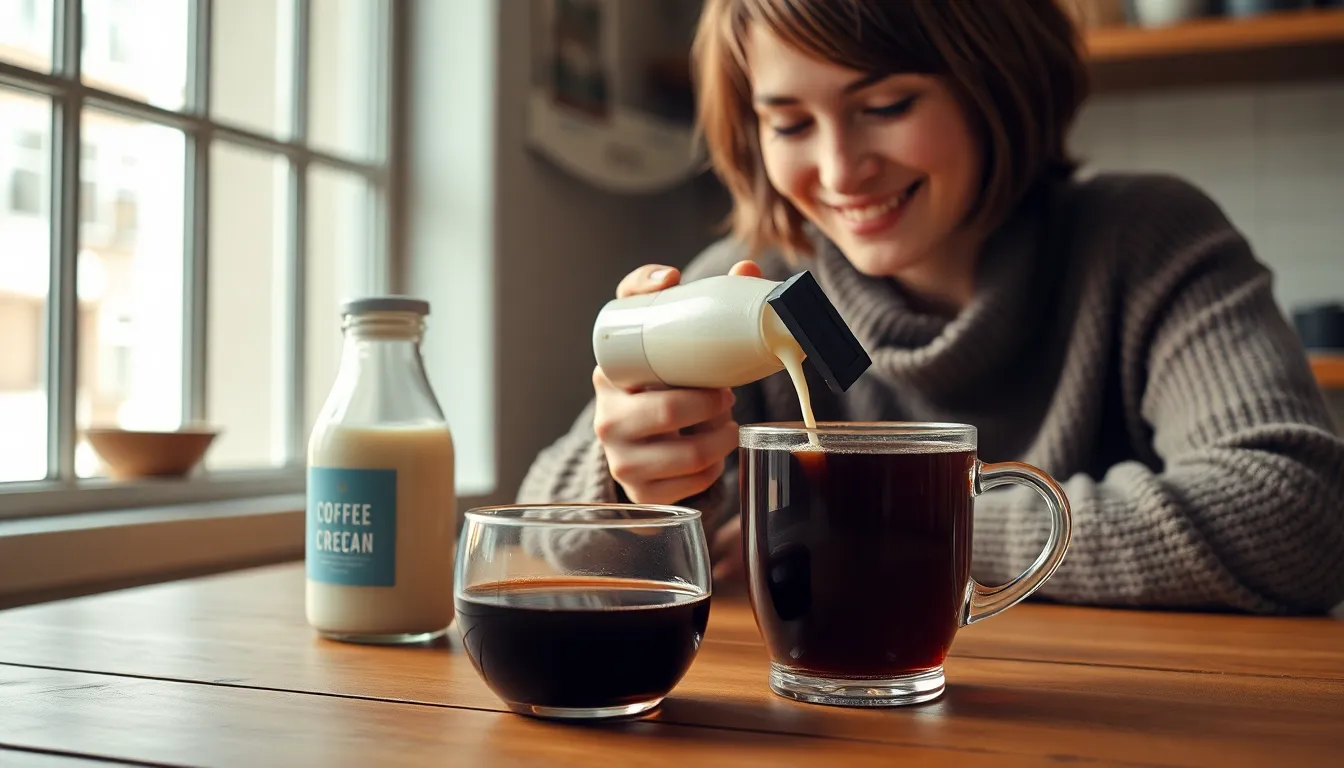Can you put creamer in tea? While coffee creamer in tea might sound unconventional to purists, it’s actually becoming a popular way to add richness and flavor to your favorite brew.
Tea traditions vary widely across cultures, from British milk tea to Hong Kong-style milk tea and the Indian masala chai. Adding creamer to your tea offers a convenient alternative when you don’t have milk on hand or when you’re looking for different flavor profiles. Whether you prefer coffee creamers, non-dairy options, or flavored varieties, they can transform your ordinary cup of tea into a creamy, indulgent treat.
What Is Coffee Creamer and Its Common Ingredients
Coffee creamer is a dairy or non-dairy product designed to enhance the flavor, texture, and appearance of beverages like coffee and tea. Unlike traditional milk or cream, commercial creamers come in liquid or powdered forms with extended shelf lives, making them convenient alternatives for daily use.
Most dairy-based creamers contain milk products, sweeteners, and emulsifiers to create a smooth consistency. Popular brands like Coffee-mate and International Delight typically include ingredients such as water, sugar, vegetable oil, and sodium caseinate (a milk derivative).
Non-dairy creamers offer lactose-free options for those with dietary restrictions or preferences. These products usually contain:
- Vegetable oils (coconut, palm, or corn)
- Corn syrup solids or sugar
- Sodium caseinate (even though being derived from milk, it’s considered non-dairy by FDA standards)
- Dipotassium phosphate (an anti-caking agent)
- Mono and diglycerides (emulsifiers for texture)
Flavored creamers introduce additional ingredients like natural and artificial flavors, caramel coloring, and various sweeteners. French vanilla, hazelnut, and caramel rank among the most popular flavor options, each containing exact flavor compounds to mimic their namesake tastes.
While traditional tea purists might hesitate to add such processed ingredients to their brew, modern tea enthusiasts appreciate the convenience and consistent flavor profile that creamers provide. The stable formulation of creamers ensures they don’t curdle in hot tea as easily as fresh milk sometimes does, especially with more acidic tea varieties.
Can You Put Creamer in Tea? The Short Answer
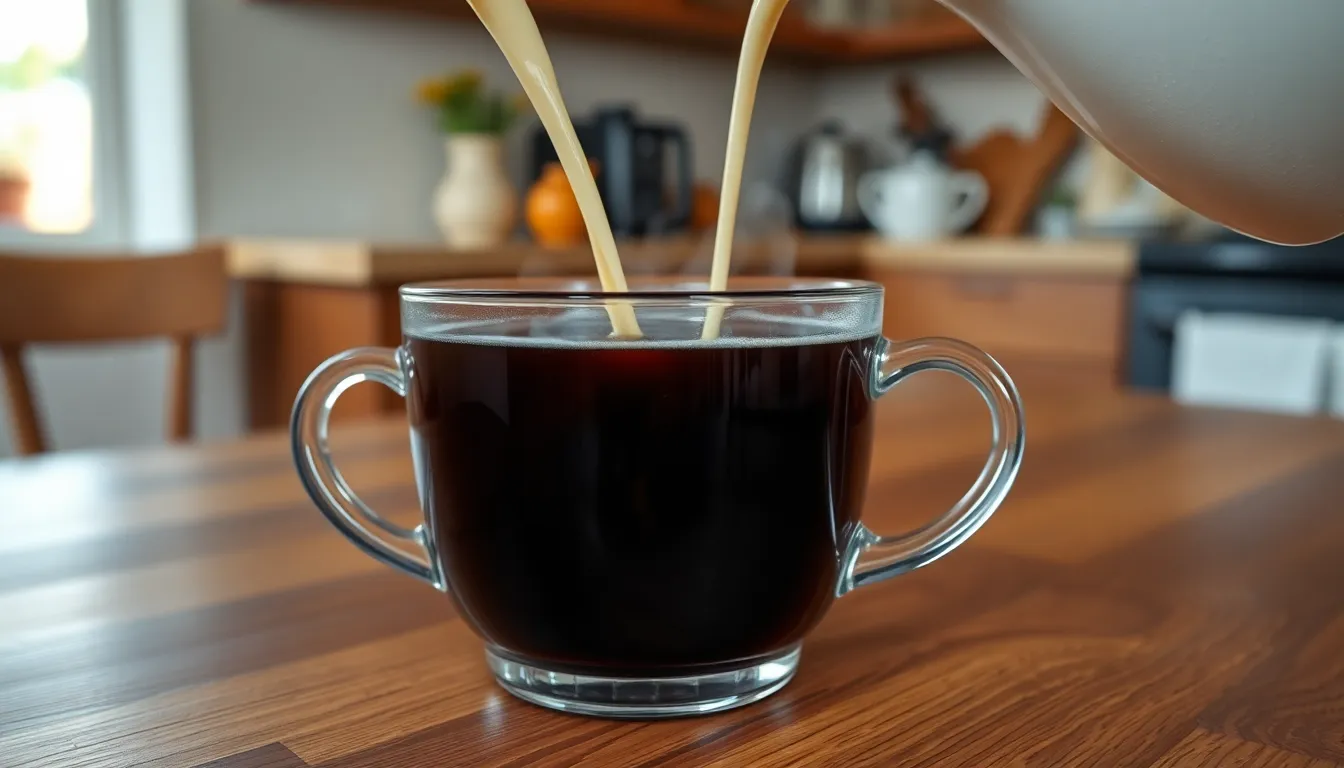
Yes, you can absolutely put coffee creamer in tea. This practice is both common and delicious, adding a creamy texture and flavor variety to your tea experience. Coffee creamer serves as an excellent alternative to traditional milk or cream, especially when those options aren’t available in your pantry.
Different tea varieties pair wonderfully with exact creamers. Black tea handles the richness of coffee creamer particularly well due to its robust flavor profile. Green tea benefits from lighter, plain creamers that won’t overpower its subtle characteristics. Herbal teas offer creative pairing opportunities—try mint creamer with peppermint tea or vanilla creamer with chai for a cozy blend.
Adding creamer correctly enhances your tea experience. Start with approximately one tablespoon per cup and adjust according to your preference. Warming the creamer slightly before adding it to hot tea prevents curdling and maintains a smooth texture. Nutritionally speaking, a tablespoon of coffee creamer typically adds only about 20 calories to your tea—significantly less than many specialty tea drinks.
The versatility of coffee creamers, including non-dairy options, makes customizing your tea simple and enjoyable. Just remember to avoid adding lemon or citrus when using creamer, as the combination can cause unpleasant curdling.
How Different Types of Tea Pair With Creamer
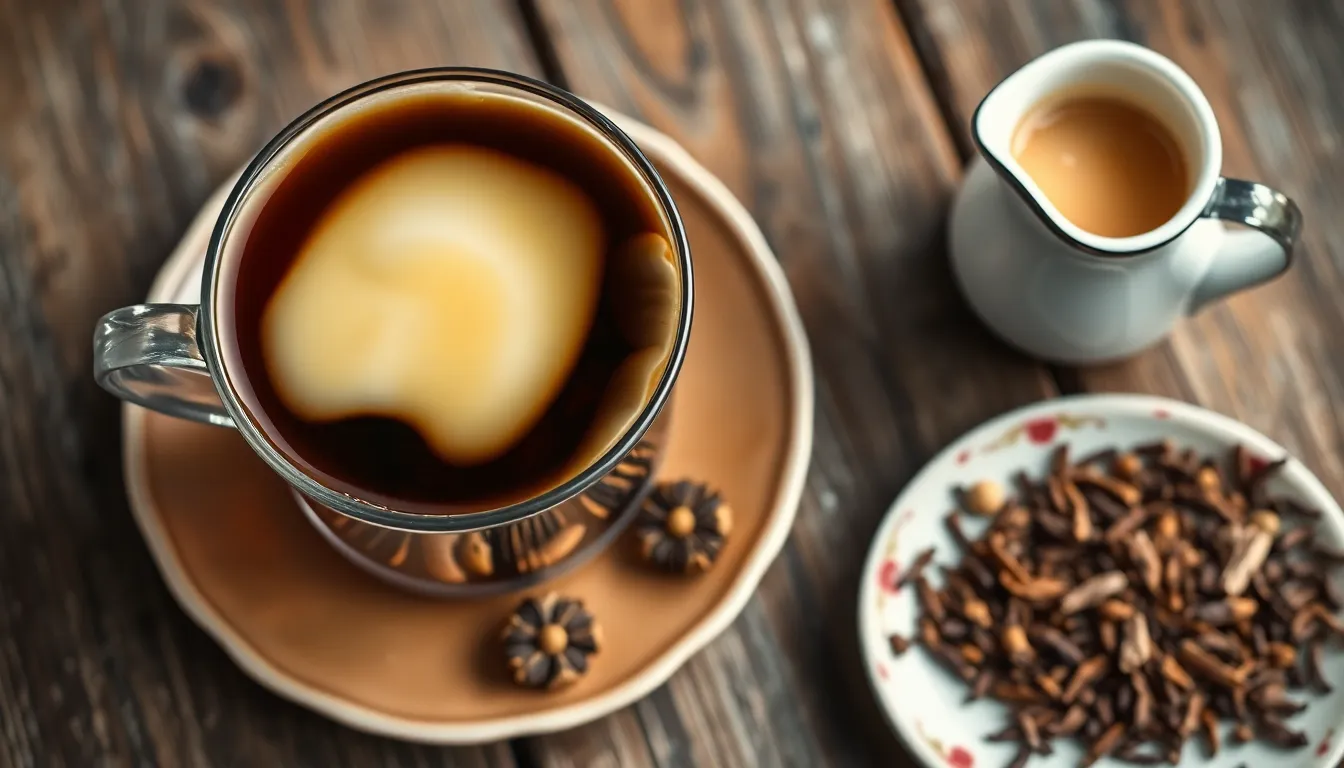
Tea and creamer combinations offer endless flavor possibilities depending on the tea variety you choose. Each type of tea has unique characteristics that either complement or contrast with different creamers, creating distinctive taste experiences.
Black Tea and Creamer Combinations
Black tea serves as the perfect foundation for creamers due to its robust, full-bodied flavor profile that stands up beautifully against creamy additions. Vanilla, hazelnut, and caramel flavored creamers enhance black tea’s natural sweetness while adding luxurious texture. A particularly delightful pairing combines butterscotch black tea with cream plus chocolate or vanilla notes for a warming, indulgent beverage. Many coffee shops recognize this winning combination, with Starbucks featuring blended drinks that incorporate black tea, sweet cream, and brown sugar syrup. The strong tannins in black tea create a balanced counterpoint to rich, flavored creamers without either component overwhelming the other.
Green Tea With Creamer: Does It Work?
Green tea requires a more delicate approach when adding creamer due to its subtle, nuanced flavor profile. Lightly flavored or plain creamers work best with green tea, preserving its distinctive character rather than masking it. Traditional tea enthusiasts often skip cream entirely with green varieties, but adding a modest amount of a gentle creamer can transform your cup into a soothing, comforting beverage. Oat milk or other light plant-based options complement green tea particularly well, improving mouthfeel without drowning out the tea’s natural grassy or floral notes. The key lies in using restraint—start with just a teaspoon of creamer and adjust according to your preference.
Herbal Teas and Cream Alternatives
Herbal teas present exciting opportunities for creative creamer pairings thanks to their diverse flavor profiles. Mint-flavored creamer amplifies the refreshing qualities of peppermint tea, creating a doubly invigorating experience. Chai teas blend harmoniously with vanilla or cinnamon creamers to create cozy, latte-style drinks perfect for cold weather. When using plant-based alternatives like soy or coconut milk, warming the creamer slightly before adding it to tea prevents curdling caused by acidity. Coconut milk introduces a sweet, nutty dimension to herbal infusions, though its distinctive flavor might clash with certain tea varieties. White tea, with its delicate floral characteristics, pairs best with very light creamers such as oat milk that preserve rather than overpower its subtle complexity. The versatility of herbal teas makes them ideal for experimenting with different creamer flavors to discover your perfect combination.
Best Coffee Creamers to Use in Tea

Coffee creamers enhance tea by adding creaminess, flavor, and richness while smoothing out any bitterness. The right creamer transforms your ordinary cup of tea into a more indulgent beverage with pleasant texture and taste.
Dairy-Based Creamers for Tea
Dairy creamers complement many teas, particularly robust black teas that benefit from added richness. Chobani Vanilla Creamer stands out as an exceptional choice, offering a creamy, rich texture with a mildly sweet vanilla flavor derived from real cow’s milk. This premium dairy option blends seamlessly into hot beverages like tea, creating a smooth and indulgent experience without overwhelming the tea’s natural characteristics. Traditional dairy creamers generally improve the richness of tea but can add varying levels of sweetness depending on their flavor profiles and formulations.
Non-Dairy Options That Complement Tea
Non-dairy creamers have gained popularity among tea drinkers with dietary restrictions or preferences beyond traditional dairy. Nutpods Almond + Coconut Creamer delivers exceptional creaminess while maintaining a lighter profile than dairy alternatives. Silk’s lineup, including their Soy Creamer and Almond Creamer, ranks among the top non-dairy options that integrate beautifully with tea. Unsweetened almond milks from brands like Whole Foods offer subtle taste profiles that enhance tea without dominating its natural flavors. So Delicious Dairy Free French Vanilla coconut milk creamer provides a fresh, smooth texture with gentle vanilla notes, though it tends to be slightly thinner than dairy-based alternatives. These plant-based options cater perfectly to vegans, those with lactose intolerance, or anyone seeking alternatives to traditional dairy in their tea.
How to Properly Add Creamer to Tea
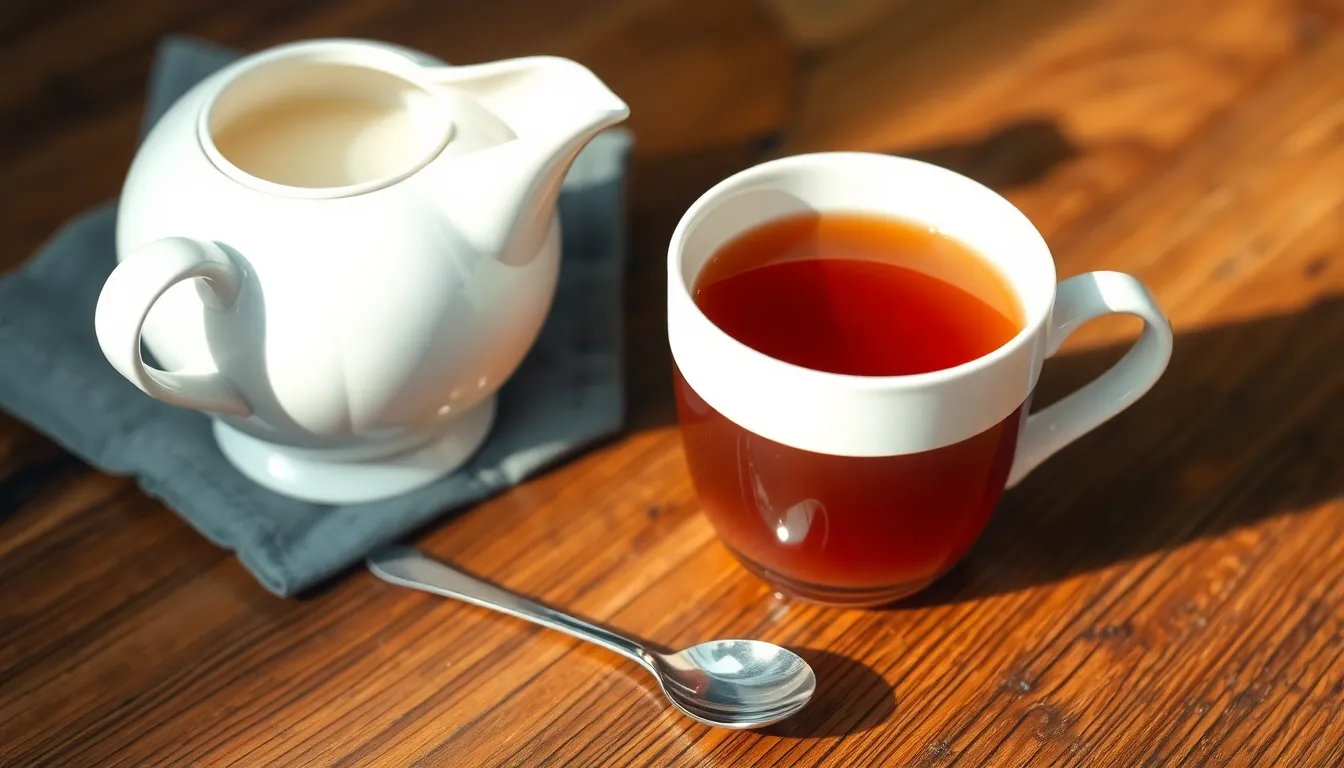
Adding creamer to tea requires a bit of technique to achieve the perfect balance of flavor and texture. These simple steps ensure your tea remains delicious and smooth without curdling or developing an unpleasant taste.
Start with the Right Amount
Begin by adding about one tablespoon of creamer to your cup of tea. This modest amount allows you to taste the combination before adjusting to your preferred level of creaminess and sweetness. Adding too much initially can overwhelm the tea’s natural flavors, so it’s better to start small and add more if needed.
Select Compatible Flavors
Plain or vanilla-flavored creamers work wonderfully with most tea varieties without dominating their distinctive tastes. For a more indulgent experience, try caramel, hazelnut, or chocolate creamers with black teas or stronger blends. The robust nature of black tea stands up well to these richer flavors, creating a satisfying beverage that’s both familiar and novel.
Prevent Curdling
Cold creamer added directly to hot tea often curdles, creating an unappealing texture and appearance. To avoid this problem, warm your creamer slightly before mixing it into your tea. This simple step ensures a smooth, consistent texture throughout your beverage and prevents those unpleasant milk solids from forming.
Match Creamer to Tea Type
Black tea pairs excellently with creamer due to its bold flavor profile that isn’t easily overpowered. Green tea can also become a creamy treat with the right addition, though many tea enthusiasts prefer to enjoy its subtle flavors without additives. Consider the strength of your tea when choosing whether to add creamer and how much to use.
Avoid Citrus Combinations
Never add creamer to tea that contains lemon or other citrus elements. The acidity from citrus fruits reacts with the proteins in dairy and dairy alternatives, causing immediate curdling and an off-putting taste. Choose either creamer or citrus for your tea, but not both in the same cup.
Consider Milk Alternatives
Beyond traditional coffee creamer, you can use milk, half-and-half, or non-dairy alternatives in your tea. For strong black teas, add about 1 to 2 teaspoons per 10-16 ounces of tea, depending on your personal preference. These alternatives offer different flavor profiles and textures that might better complement certain tea varieties.
Cultural Perspectives on Adding Creamer to Tea
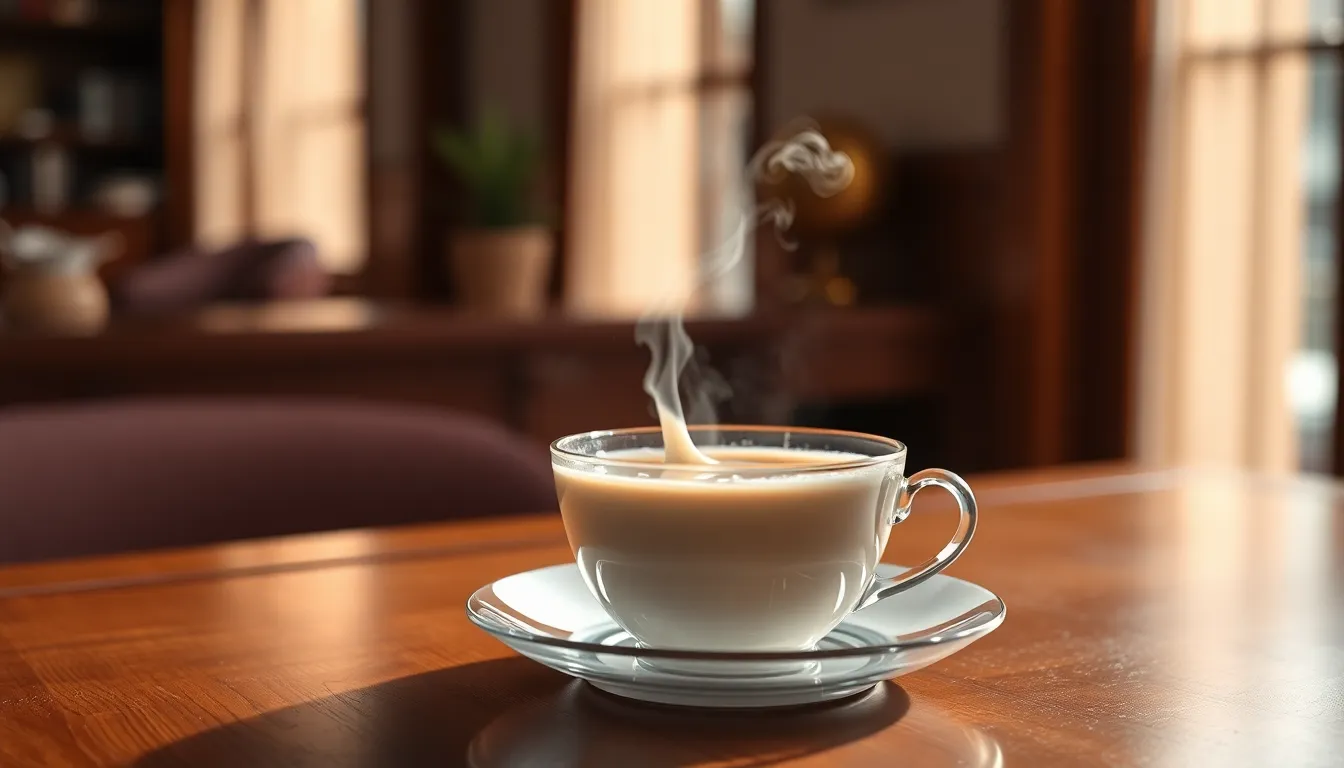
Western cultures embrace adding dairy to tea as a time-honored tradition, particularly in England where the practice dates back to the 18th century. Wealthy individuals would add cream or sweet milk to their tea as a status symbol, showcasing their prosperity through this simple addition. British tea culture continues to celebrate the milk-first or tea-first debate, highlighting how deeply ingrained dairy additions are in their tea rituals.
Asian tea traditions typically favor serving tea in its pure form to appreciate the natural flavor profiles. Chinese and Japanese tea ceremonies emphasize the unadulterated taste and aroma of carefully selected tea leaves, focusing on the subtle notes that might be masked by creamer additions. Tea masters in these regions spend years perfecting brewing techniques that showcase tea’s inherent qualities rather than improving them with dairy products.
Indian chai culture represents a fascinating middle ground where milk isn’t just an addition but an essential ingredient. The iconic masala chai blends robust black tea with milk, sugar, and aromatic spices like cardamom, cinnamon, and ginger to create a creamy, flavorful beverage that’s central to daily life. Hong Kong-style milk tea similarly incorporates evaporated milk with strong black tea, resulting in a silky, rich drink that’s become a cultural staple.
Modern tea enthusiasts increasingly view adding creamer as a form of personal expression rather than a cultural faux pas. Flavored creamers like vanilla, caramel, and hazelnut allow tea drinkers to customize their experience beyond traditional boundaries, creating unique flavor combinations that reflect individual preferences. This trend toward personalization represents an evolution in global tea culture, where exploration and experimentation are valued alongside tradition.
Regional variations demonstrate how tea with creamer adapts to local tastes worldwide. Thai tea incorporates sweetened condensed milk for a decadently sweet experience, while Taiwanese bubble tea features non-dairy creamers alongside chewy tapioca pearls. Malaysian teh tarik (“pulled tea”) uses evaporated milk and a dramatic pouring technique to create a frothy, creamy beverage that’s as much performance art as refreshment.
Potential Flavor Changes When Adding Creamer
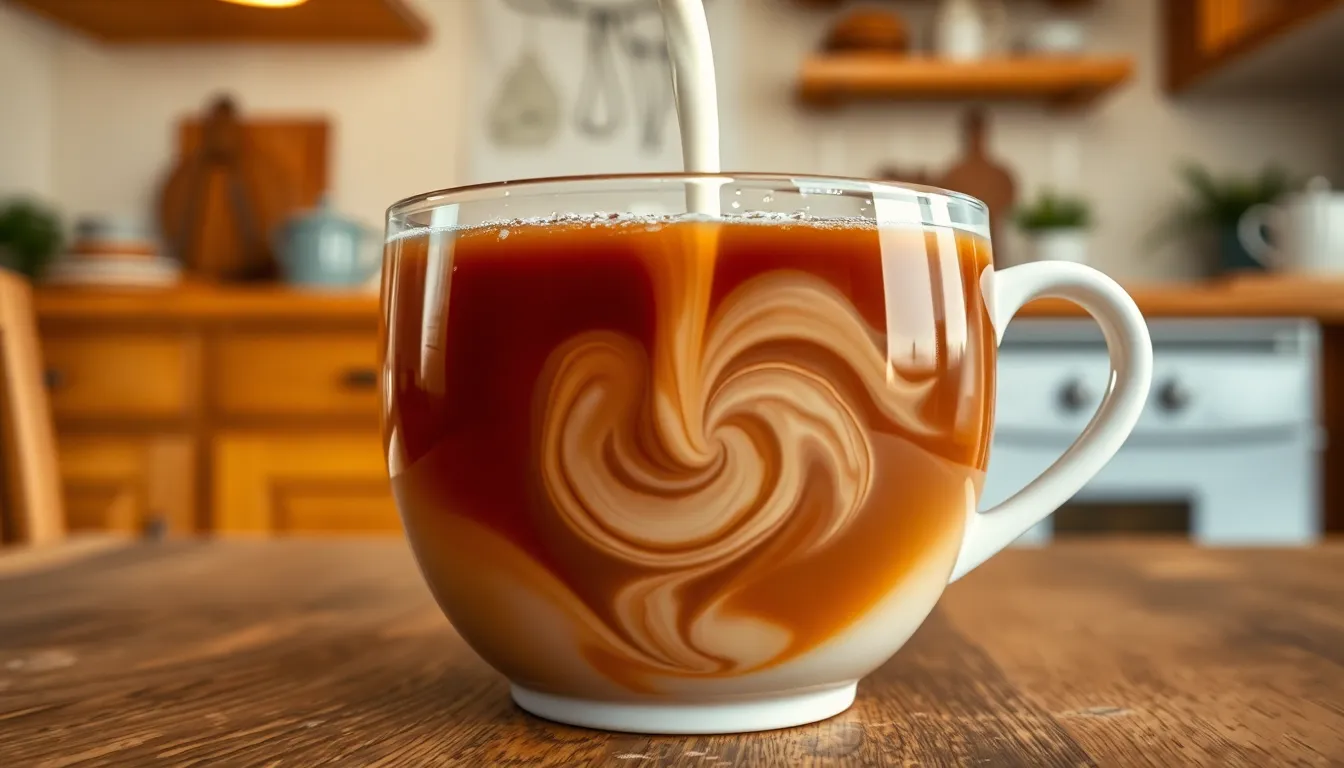
Adding creamer to tea transforms both its flavor profile and texture in several noticeable ways. Creamers introduce a rich milkiness that softens the natural astringency found in many teas, creating a smoother drinking experience. The sweetness level of your tea increases significantly when using commercial creamers, as most contain added sugars or sweeteners that enhance the overall palatability.
Bitterness reduction occurs almost immediately when creamer is added to tea. The proteins and fats in creamer bind with the tannins responsible for tea’s bitter notes, effectively neutralizing them and creating a more balanced flavor. This modification works particularly well with over-steeped teas or stronger black varieties that might otherwise taste too harsh.
Flavor complexity changes dramatically depending on which creamer you choose. Vanilla creamers add warm, sweet notes that complement the natural maltiness of black teas. Hazelnut varieties introduce nutty undertones that can transform a simple cup into something more dessert-like. Caramel creamers contribute buttery richness that pairs exceptionally well with chai and other spiced teas.
Texture alterations are equally important when considering creamer in tea. The mouthfeel becomes noticeably silkier and more substantial, adding a luxurious quality that plain tea lacks. This textural enhancement makes each sip more satisfying and creates a more filling beverage experience overall.
Aroma profiles shift substantially with creamer addition. The dairy compounds or their plant-based equivalents temper the tea’s natural fragrance while introducing new scent elements. This olfactory transformation contributes significantly to how you perceive the final flavor, as smell and taste are intimately connected sensory experiences.
Starting with approximately one tablespoon of creamer provides an ideal baseline for experimentation. From this foundation, you can adjust the amount upward for greater creaminess or downward for a more subtle effect. Different teas respond uniquely to creamer additions, making personal experimentation essential for finding your perfect balance.
Health Considerations of Adding Creamer to Tea
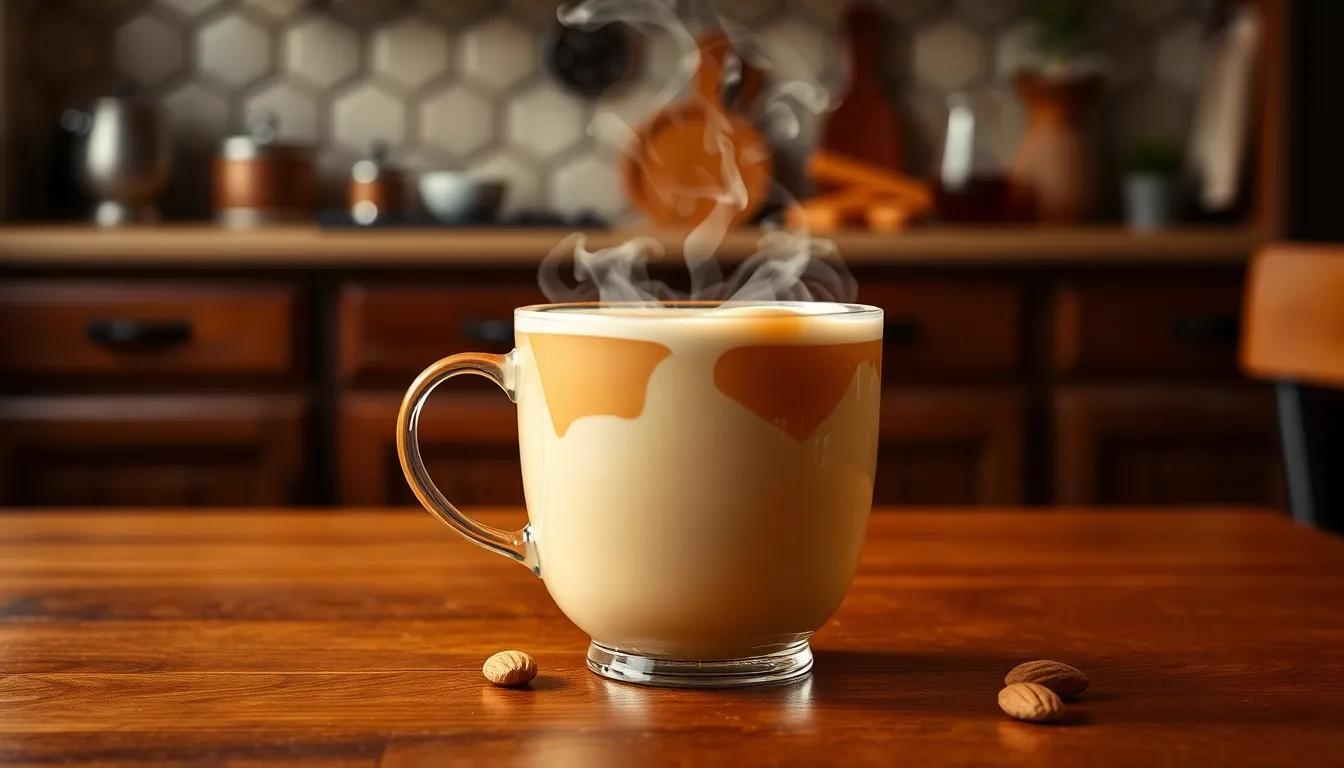
Adding creamer to your tea impacts more than just the flavor – it affects the nutritional profile and potential health benefits of your beverage. Understanding these implications helps you make informed choices about how you enjoy your tea.
Caloric and Nutritional Impact
Coffee creamers add calories, fat, and often sugar to your cup of tea. A typical tablespoon of commercial creamer contains approximately 20 calories, making it a lighter option compared to specialty tea drinks. Regular consumption of creamer-enhanced tea contributes to your daily caloric intake, potentially affecting weight management goals if used excessively. Most commercial creamers provide minimal nutritional value while increasing the energy density of your beverage.
Additives and Artificial Ingredients
Traditional coffee creamers often contain many food additives, artificial flavors, and preservatives that may impact health with regular consumption. Ingredients like partially hydrogenated oils, corn syrup solids, and artificial colors are common in many commercial options. Plant-based alternatives such as almond, coconut, or oat milk creamers typically offer cleaner ingredient lists with fewer additives, making them potentially healthier choices for your tea.
Effects on Tea’s Antioxidant Properties
Tea’s health benefits largely come from its rich antioxidant content, particularly compounds called catechins. Adding dairy-based creamers to tea can bind with these catechins, potentially reducing their effectiveness and bioavailability. This binding effect may diminish some of the antioxidant benefits typically associated with tea consumption, especially in green and white varieties that are particularly rich in these beneficial compounds.
Digestive Considerations
The interaction between creamer and hot tea can sometimes lead to unpleasant digestive effects. Adding cold creamer directly to hot tea risks curdling, creating an unappetizing texture and potentially causing digestive discomfort for sensitive individuals. Warming your creamer slightly before adding it to tea prevents curdling while maintaining a smooth, pleasant drinking experience. Heavy cream-based options might also trigger digestive issues for those with lactose sensitivity or intolerance.
Healthier Alternatives
Plant-based creamers represent a growing category of healthier alternatives for tea enhancement. Almond milk creamers provide a nutty undertone with fewer calories than dairy options. Coconut-based versions offer natural sweetness and creaminess without artificial additives. Oat milk creamers provide excellent texture with beneficial fiber content. These alternatives cater to various dietary preferences while minimizing some of the health concerns associated with traditional dairy creamers.
Conclusion
Adding creamer to tea opens up a industry of flavor possibilities that can transform your daily cup into something special. Whether you prefer dairy or plant-based options you’ll find that the right creamer can smooth out bitterness while adding richness and complexity.
Feel free to experiment with different combinations to discover your perfect match. Black teas welcome richer creamers while green teas pair beautifully with lighter options. Just remember to add creamer gradually and warm it slightly for the best results.
While traditionalists might raise an eyebrow coffee creamers offer a convenient and delicious way to customize your tea experience. The practice bridges cultural traditions and modern preferences creating something uniquely yours.
So go ahead and try that vanilla creamer in your Earl Grey or coconut option in your chai. Your perfect cup awaits!
Frequently Asked Questions
Can you put coffee creamer in tea?
Yes, you can absolutely put coffee creamer in tea. This practice is becoming increasingly popular as it enhances the flavor and adds richness to your tea. While it might seem unconventional to traditionalists, adding creamer can be a convenient alternative when milk isn’t available and allows for a variety of flavor combinations that can transform an ordinary cup of tea into something special.
What’s the difference between using milk and coffee creamer in tea?
Coffee creamer offers longer shelf life and consistent flavor compared to milk. Creamers are specifically formulated to resist curdling in hot beverages, making them more stable in tea. They come in numerous flavors that milk doesn’t offer, and non-dairy options provide alternatives for those with dietary restrictions. However, creamers typically contain more additives and preservatives than natural milk.
Which teas work best with coffee creamer?
Black teas like English Breakfast or Earl Grey pair excellently with creamers due to their robust flavor profiles that stand up to creamer’s richness. Green teas work better with lighter, less sweet creamers that won’t overwhelm their delicate notes. Herbal teas offer creative pairing opportunities—try vanilla creamer with chamomile or hazelnut creamer with rooibos for delicious combinations.
How much creamer should I add to my tea?
Start with approximately one tablespoon of creamer per cup of tea. This amount provides creaminess without overpowering the tea’s natural flavors. You can adjust based on personal preference—add more for increased richness or less for a subtler effect. Remember that flavored creamers may also add sweetness, so you might need less sugar than you typically use.
Are there any health concerns when adding creamer to tea?
Commercial coffee creamers can add calories, sugars, and artificial ingredients to your tea. A tablespoon typically adds about 20 calories, but regular consumption can affect weight management goals. Some creamers contain hydrogenated oils, corn syrup, and artificial flavors. Additionally, dairy components can bind with tea’s antioxidants, potentially reducing their health benefits. Consider plant-based alternatives for cleaner ingredient profiles.
Will adding creamer to tea cause it to curdle?
Quality coffee creamers are formulated to resist curdling in hot beverages, making them less likely to curdle than fresh milk. To prevent curdling, avoid adding creamer to extremely hot tea—let it cool slightly first. Never combine creamer with lemon or citrus as the acid will cause curdling. Warming plant-based creamers slightly before adding them can also help maintain a smooth texture.
What are the best non-dairy creamer options for tea?
Almond-based creamers like Nutpods offer a neutral flavor profile that complements delicate teas. Coconut creamers provide natural sweetness and tropical notes that pair well with black and herbal varieties. Oat creamers create a creamy mouthfeel similar to dairy without overpowering the tea. Soy-based options like Silk’s creamers offer protein and a stable texture that works well in hotter teas.
Is adding creamer to tea traditional in any cultures?
While adding dairy to tea is traditional in British tea culture and Indian chai preparations, coffee creamer specifically is a modern adaptation. Thai tea and Malaysian teh tarik traditionally use sweetened condensed milk, which shares similarities with creamer. In contrast, many East Asian tea traditions emphasize enjoying tea in its pure form without additives. Today’s global tea culture increasingly views creamer as a form of personal expression.

